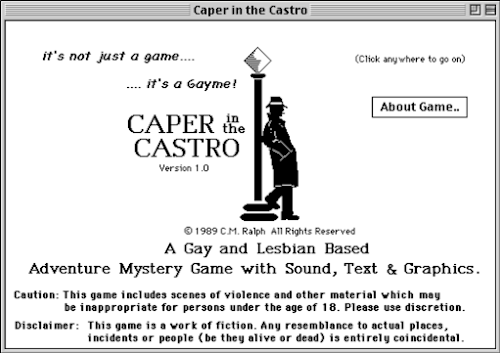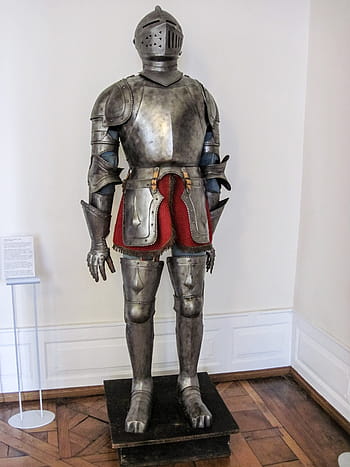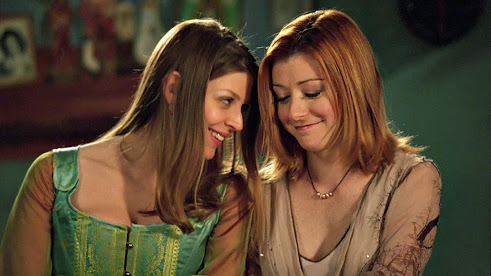From The Adventure Gamer
Written by Joe Pranevich
I intended to wrap up Moonmist this week by closing out on the three remaining cases then moving quickly to the final rating. I did not make it. When playing and reviewing, I try to come to these games as unspoiled as I can. I learn what I need to discuss the history and place the game in context, but I avoid spoiling the plots and puzzles as much as I can. Usually that works, but in this case I missed one of the things that Moonmist is most remembered for: it is (supposedly) the first computer game to feature LGBT characters. I disagree with that assessment, but we’ll get there soon enough. It seems poor form for me to review this game, in Pride Month of all times, without giving space to discuss this important aspect of gaming history.
 |
| Boston Pride in the mid-1980s. |
I am not an expert on LGBT issues in pop culture and I encourage our commenters to tell me all of the details that I am sure to be missing. As a child of the 1980s, I grew up steeped in the stereotypes that pervaded America when this game was written. Jim Lawrence and Stu Galley are older still and grew up with the stereotypes that they picked up from the media of their day. Those attitudes stemmed from even earlier depictions in books and film. Attitudes are far from unchanging, but each successive generation carries a bit of the baggage of the previous.
At least in the United States, one of the ways in which pop culture shaped attitudes towards homosexuality is through the “Hays Code”, or more properly the “Motion Picture Production Code”. That is not to say that discrimination didn’t exist before– that code itself was a product of generational attitudes– but it codified (for film) a set of rules that was followed from the 1930s through the 1960s and persisted even later through the threat of boycotts and self-censorship. Similar codes existed in other media, but it is undeniable that the Hays Code helped to reinforce the way “average” Americans felt about certain issues. This is not limited to homosexuality! These rules banned depictions of inter-racial relationships, criticism of religion, pre-marital sex, and many other things. You could not portray a criminal as sympathetic. You had to show respect for law enforcement. Homosexuality, considered a “sexual perversion”, could be depicted only as a trait of a villain. LGBT characters in these films were murders and sadists brought to justice, or emotionally challenged individuals prone to suicide. Gay character traits became associated with villany. Long after the Hays Code fell out of favor, these tropes remained in use, burned into society’s collective unconscious.
 |
| It was Mr. Green with the (suggestive) pipe! |
To take one small example, I looked last week at the film Clue and how it may have inspired Moonmist by featuring multiple endings. In that film, Mr. Green is depicted as a gay man who lives in constant fear of being discovered and losing his job at the State Department. This makes him an easy target for extortion. He’s a bumbling fool, although perhaps not much more than others in this comedy-mystery. It is only in the “real” ending of the film that Mr. Green is revealed to be a hero: he’s an undercover FBI agent who was working to expose the crimes of Mr. Boddy and the rest of the houseguests, all of whom had murdered someone over the course of the night. (Communism was a “red herring”!) But in that crowning moment of awesomeness, Mr. Green’s gayness was stripped away. As the police arrest the guests, Green speaks the final line of the film: “OK Chief, take them away! I’m gonna go home and sleep with my wife!” Even forty years later, LGBT representation in media often falls into established patterns. Gay characters are still often driven to suicide. If they don’t do it to themselves, they could be killed by something else, and may be the first in line to be killed in such a way.
I will spoil the ending a bit to say that this Moonmist variant falls right back on these tropes. In the “blue” mystery, Deirdre and Vivien are revealed to have been lovers. Deirdre is bisexual and torn between her love for a man (Lord Jack) and Vivien. Ultimately, she surrenders to suicide by jumping in the well in the basement of the castle. In comic book fashion, Vivien swears revenge on the man that took her love away. It is perhaps progressive by including gay characters at all, but these are the same “murderer” and “suicide” options that were all the rage during the Hays Code days.
 |
| I love a good Mac adventure. |
After all that, was Moonmist really the first video game to include LGBT characters? Unfortunately not. We already saw one example in this very series! Leather Goddesses of Phobos includes a scene where the player character can choose to have sex with one of the titular Goddesses just before the end of the game. Unique across all of the sexual interactions you can have, this is the only one that is not gendered: the Goddesses are female whether you play as a man or a woman. If you choose to go that route, you can prove that your player character is not only bi-curious, but the villains are bisexual as well. They are still murderers and sadists, of course, fitting the evil gay trope exactly, but the game did come out a few months prior to Moonmist.
Another set of examples come from Europe, admittedly in games that most Americans would not have played. Two games by Froggy Software, written in French, feature gay villains:
- Le crime du parking (1985) – In “The Parking Lot Crime”, the villain is a gay drug dealer.
- Le mur de Berlin va sauter (1985) – In “The Berlin Wall Will Blow Up”, the villain is a gay terrorist who wants to destroy the Berlin Wall. Maybe he wasn’t all bad?
Not a single one of these games includes a positive depiction of LGBT characters!
To find a positive depiction, we have to turn the clock forward to 1989 and the graphical adventure Caper in the Castro by C. M. Ralph. Following indirectly in the footsteps of ICOM games such as Déjà Vu (1985), it features an on-the-nose detective named Tracker McDyke as she investigates the disappearance of a drag queen friend. She will have to search San Francisco’s famous Castro District, one of the most famous and earliest gay neighbothoods in the country, to solve the case. Ralph released the game to help raise money for AIDS-related charities; she also produced a “straight” variant (Murder on Mainstreet) that she expected would garner wider distribution. Once believed lost, this game has been recovered thanks to the efforts of the Internet Archive and Strong Museum of Play. I have added it to my personal “to play” list and hope to dive into it at some point in the future.
Where were we? Oh right, this is supposed to be a post about Moonmist.
 |
| I’m blue da ba dee da ba daa. |
Playing the Blues
After finishing the first variant last week, I have no idea how the rest of them will go. Will they be mostly the same? Mostly different? How bored will I get if I must explore everything again? For this version, I’m choosing a female character again (“Ms. Blueish”), but I’ll use a male one and a “not specified” one for the final two just to see what is different. I will not recap everything that happens; please check out the previous two posts if you need a refresher.
After starting the game and picking my color, the game proceeds as before. The first change comes when I ask Tamara about the ghost. She tells me that she saw the ghost again, this time outside the office brandishing a sword. Tamaram fled back inside and locked the door. After a time, the ghost disappeared and was not seen again.
Just as before, Tamara leads me from room to room to introduce me to the guests. Most of the responses are unmemorable, but Vivien’s stand out. Let me quote them in full:
“Chasing her ghost won’t bring her back to me.” Does that sound like I think it sounds? Were Vivien and Deirdre together!? That would be an amazing twist, if so. We know that Deirdre was engaged to Jack in all of the versions since it is in the manual text. Was she only with Jack to hide a secret love affair? Or was this something simpler, like a childhood dalliance? And how could a socialite like Deirdre even meet a poor woman that grew up in a nearby cottage? Perhaps her art inspired her to fraternize with the locals? It seems like they would have had quite different social circles.
 |
| Something like this? |
We are eventually brought to our room to freshen up. Just as before, Bolitho, the butler, stops by for a chat. He also spied the White Lady in this version, except now she was in the New Great Hall and searching on the floor like she needed glasses! The butler also seems to be hinting about how to open the secret passage in my room. The language is exactly the same as before, but I suspect that I just didn’t catch on until I learned more about how the passages work. A nice little detail!
I dress and head downstairs for dinner. I get there a few minutes early so I have time to search the New Great Hall on the way. Somehow managing to remain untrampled, I discover a contact lens on the floor. The ghost really did need glasses! Who could it belong to?
The dinner party proceeds as before with the butler leaving a note about the staff leaving, Jack announcing his engagement, and Lionel’s recorded voice from beyond the grave surprising his guests with a “scavenger hunt”. The first clue is still hidden under the punch bowl, but this time it is a picture of a skeleton in a Chinese Mandarian costume. What could that mean? The second clue is given to Jack this time and it is a rhyming poem with some words missing:
The answers are simple, especially since the topics are reiterated in all three stanzas: “song”, “maiden”, and “wine”. Thanks to my exploration last time, I know there is a wine cellar in the basement, an iron maiden in the dungeon, and a piano in the sitting room. Plaything through multiple times has advantages!
Since everyone is together, I ask about glasses and the lost contact lens. Would anyone be dumb enough to admit it? Dr. Wendish wears glasses but says that he cannot stand contacts. Hyde wears a monocle. Vivien claims that she cannot tolerate contacts but wears glasses for close-up work in her art. No immediate clues there.
The party moves to the sitting room. I grab the maid’s note off the desk and it’s the same as before but ends with a strange warning:
I still hate the face accented speech. I also have no idea what this means, except that I should be on the lookout for a villain that leaves Post-Its around the mansion documenting his or her crimes.
 |
| Armor or Armour? You decide. |
Since I am here, I check the piano. Instead of music from A Prairie Home Companion, the piano now has Beethoven’s Suite #9 ready to be played. Someone has circled the “SUIT” in the title. That must be a clue! I immediately check the suit of armor in the hall and am rewarded with yet another clue. This is going very quickly! Unfortunately, it isn’t quite as self-explanatory as the others:
I have no idea what that means so I head down to the wine cellar instead. As expected, I locate a bottle of wine with “OUR” circled on the label. I get cocky and guess that the iron maiden will have an “ARM” label on it someplace, but I am disappointed. Two out of three isn’t bad! I’m certain that the clue is just telling me to search the armor, so it is no longer necessary. While exploring, I notice that this time it is Vivien and not Jack who is scouring the house for treasure. Jack is content to let someone else find his family’s priceless heirloom? I still do not understand the rules of this scavenger hunt.
It takes only a few minutes of searching to discover a fossil skill hidden in the bell on the roof of the castle. My hint was that the word “clamour” would have rhymed with “glamour” and that was the only clamorous object I could remember. I have no idea what the other blanks are supposed to mean, but it hardly seems to matter now.
 |
| A fancy contact lens case from the 1980s. |
It’s only 9:45 PM! I am making excellent time through the game, but I still need to figure out who the ghost is. With Vivien busy searching the castle, I sneak into her room and search. Inside her art supply box, I discover a contact lens case with a missing contact. Score! Vivien is the ghost, but why? I grab the box and show it to her, but she claims that I planted it in her room to frame her. I try a more direct approach by hiding in the secret passages until the ghost appears. That worked last time and it works again! This time, the White Lady appears armed with a blowgun. I quickly fire the butler’s aerosol can at her and she falls to the floor unconscious. I search her to confirm that yes, it is Vivien. Worse, her blowgun contained a real poisoned dart. She was out to kill someone tonight… but who?
I wake Vivien but instead of admitting it all, she sort of sleepwalks to her room. What was in that spray? Once there, she still doesn’t admit anything. I show her the ghost costume and she accuses me of planting it! I just caught you in the secret passage! The nerve of some people.
The step that I missed ends up being simple: if I had looked in Vivien’s art supply box again after removing the contact lens case, I would have discovered her diary. Reading that reveals a tear-stained page:
That gives us our motive and we can finally accuse her of being the ghost. Bolitho appears and takes her away. The narrator reveals what really happened:
This time around, Vivien didn’t actually kill anyone. Deirdre’s death was an accident rather than a suicide– although I’m not sure I believe that– and Vivien wanted revenge on Jack for it. It’s all rather complicated. It also means that the maid must have read her diary which also just comes off as creepy, although not as creepy as dressing in a glow-in-the-dark ghost costume. (Yes, you can use it as a light source!) In this version, either Lionel’s death was natural or Jack was much better about hiding it.
It actually doesn’t seem impossible that, other than the ghost, the stories aren’t mutually exclusive. Jack could still have killed Lionel and Deirdre, just as in the “red” version, but this time Deirdre is either really dead or has no interest in coming back to either of her two lovers. Will the rest of the cases fit together as well? We’ll have to play them to see.
With luck, next week will really be the Final Rating. Thanks for humoring me through this special look at the “blue” version. Happy Pride!
Time Played: 1 hr 20 min
Total Time: 6 hr 45 min
Original URL: https://advgamer.blogspot.com/2020/06/missed-classic-moonmist-representation.html

